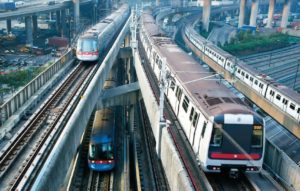
MTR’s railway system covers 221 kilometers and is used by more than five million people each weekday. It not only performs well—trains run on schedule 99.9 percent of the time—but actually makes a profit: $1.5 billion in 2014. MTR fares are also relatively low compared with those of metro systems in other developed cities. The average fare for an MTR trip in 2014 was less than $1.00, well under base fares in Tokyo (about $1.50), New York ($2.75), and Stockholm (about $4.00).
One important reason the system has been able to perform so well is that the government of Hong Kong has enabled MTR to make money from the property-value increases that typically follow the construction of rail lines. The key is a business model called “Rail plus Property” (R+P). For new rail lines, the government provides MTR with land “development rights” at stations or depots along the route. To convert these development rights to land, MTR pays the government a land premium based on the land’s market value without the railway.
Revenues are derived from profit sharing with private developers (mostly for residential projects) in real estate sale, and from renting and managing MTRC-owned properties (in particular for commercial and office operations). MTRC is now one of the major players in the property market in Hong Kong, China, and its profit from transport operations accounts for barely 20% of its total profit.
In addition to providing a stable and abundant source of income, developing property along the railway benefits MTRC by attracting residents to amenities and housing near the stations, which contributes to railway patronage.